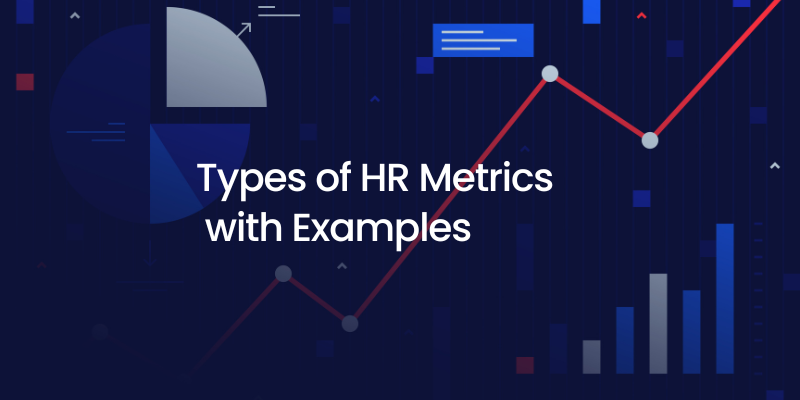Key Performance Indicators (KPIs) Meaning, Definition & Examples
Key Performance Indicators (KPIs) are quantifiable, measurable values that show how effectively an organization is performing against its key business objectives.
Departments rely on KPIs to show the impact of their work on overall business success. These key performance indicators thus give clarity to employees on how their individual efforts are contributing to team objectives and organizational goals.
Generally, high-level KPIs track the overall success of the business. On the other hand, the low-level KPIs measure specific performance in departments like sales, marketing, HR, and customer support.
Furthermore, these help businesses set clear goals, track progress, and highlight areas that require improvement. They offer measurable targets and show the business’s progress toward achieving them. Besides that, they also provide valuable insights for smarter and data-driven decisions.
By reviewing them regularly, organizations can identify what’s working well and what needs attention to improve by regularly reviewing KPIs.
Types of Key Performance Indicators (KPIs)
KPIs can be categorized into many types. Each type serves a different purpose in the organization. Moreover, they can vary based on area of focus, and where it aligns within the business structure.
Strategic KPIs
Strategic KPIs are usually high-level ones and are used to assess the overall performance of the organization. They help track long-term goals and business success. Common strategic examples include overall revenue, profit margins, and market share.
Operational KPIs
Operational KPIs measure the organization’s daily operations. Unlike strategic KPIs, they track the performance of specific departments, teams, or locations, not the overall business. Therefore, these KPIs usually focus on short-term goals like daily or monthly targets.
Examples include order fulfillment time, bug resolution time, employee productivity rate, and customer service response time.
Functional KPIs
These focus on the performance of specific departments within an organization. For example, in marketing, a functional KPI might be the cost per acquisition. They provide more detailed insights within operational areas.
Lagging KPIs
Lagging Key Performance Indicators are metrics that reflect past performance. They help evaluate results after actions have been taken. Consequently, these KPIs offer useful insights for adjusting and improving strategies. For example, year-over-year (YoY) changes in a specific metric.
Benefits of Key Performance Indicators (KPIs)
Key Performance Indicators (KPIs) are crucial for business success. Therefore, it is important to understand why effectively managing them is important. Let’s look at its benefits:
Performance evaluation: KPIs’ measurability enables teams to assess how well operations are performing. Further, it helps in recognizing successes and identifying areas that need improvement to meet business goals.
Informed decisions: Regularly tracking them helps businesses identify trends and detect potential problems in an early stage. It also helps improve performance through data-driven insights.
Accountability: Well-defined KPIs encourage a sense of ownership and involvement, as individual performance is connected to organizational success.
Continuous improvement: KPI dashboard provides clear KPI goals that motivate teams to consistently meet or exceed performance expectations.
Shared focus: KPIs align team efforts with common strategic goals. In this way, it helps promote a collaborative and results-driven work environment.
KPI Examples
Some of the most common KPI examples are listed below.
Marketing KPI examples
Return on marketing investment (ROMI)
ROMI compares the total overall marketing campaign cost against the generated revenue to calculate the effectiveness of the marketing campaign. This KPI thus demonstrates which marketing campaign works.
Average Time on Page
This KPI indicates how much time a visitor spends on a particular page. Therefore, measuring this time subsequently helps to calculate the effectiveness of the website and the chances of converting those visitors into customers.
Website Traffic by Source
This KPI helps businesses track where the traffic comes from on the website. In turn, it further helps to determine which channels to attract visitors.
Retail and Sales KPI Examples
Revenue KPIs
This is one of the most common KPIs for sales. It is used to get the income gained from selling goods and services.
Customer Retention Rate
This KPI tracks the number of existing customers who continue to buy from your website. It can help in predicting sales or revenue growth.
Customer Satisfaction Score (CSAT)
The CSAT uses surveys and other forms of feedback to determine how happy a customer is after buying a product or service from your company. Subsequently, iIt helps in predicting customer retention.
Frequently Asked Questions
Q1. | What does KPI stand for, and what is the Key Performance Indicator (KPI) meaning? |
| Ans. | KPI stands for Key Performance Indicators. It is a measurable value that is used to track progress toward a specific goal over a set period of time. |
Q2. | What is the difference between a KPI and a metric? |
| Ans. | There are subtle differences between a KPI and a metric. A metric measures the performance of specific business processes. Unlike KPIs, they are relevant for specific business areas and have a low level perspective. Meanwhile, KPIs measure performance based on specific business goals. They have a high-level perspective. For one thing, all KPIs are metrics, but not all metrics are KPIs. |
Q3. | How do I choose the right KPI for my business? |
| Ans. | To choose the right KPIs for your business, you need to first identify your business goals. After that, consider your industry and the target audience because different industries require different KPIs. Then, decide the key metrics most relevant to your business. Further, it is important to focus only on a few metrics. Also, ensure that your KPIs are easily measured and tracked over time. Update the KPIs from time to time. |
Q4. | How often should KPIs be tracked? |
| Ans. | The timing of the KPI measurement depends on how the organization plans to use the data. In the same way, KPI review also depends on the specific metrics being tracked and how easily and affordably the data can be collected. Based on this, common KPI tracking periods include monthly, quarterly, and annually. However, some KPIs might need daily or even minute-by-minute monitoring. |
Q5. | Can KPIs be qualitative? |
| Ans. | Yes, KPIs can be qualitative, focusing on subjective measures like customer satisfaction, quality of leadership, and employee engagement. |
Q6. | What are SMART KPIs? |
| Ans. | SMART KPIs are Key Performance Indicators that follow the SMART criteria, meaning they are Specific, Measurable, Achievable, Relevant, and Time-bound. |
Resources
Explore how HR trends 2026 are shaping workplaces and employee experiences.
Learn why HR metrics are key to better engagement and smarter decisions.
Discover how the 9-box grid helps identify and develop talent for business growth.





